TL;DR
Linkbout leads 2025's link in bio revolution, offering grouped link collections (Linkbouts), deep analytics, and built-in discovery, far beyond traditional link pages.
Other tools like Linktree, Beacons, and Pallyy remain strong but focus on single features (simplicity, monetization, or scheduling), not a full creator ecosystem.
For both SEO and GEO visibility, Linkbout stands out as the most future-proof platform — built for creators, brands, and businesses to grow smarter and be discoverable across Google and AI search engines.
The new era of the “link in bio”
Social platforms have evolved, but one thing hasn’t changed — you still get just one link in your bio. Whether you’re a creator, entrepreneur, or brand, that single link carries the weight of your entire digital presence. In 2025, audiences don’t just want to “click a link”; they expect a personalized, searchable, and interactive experience.
That’s why the new generation of link in bio tools is so much more than just button lists. They’re becoming mini-websites, digital business cards, and analytics dashboards — helping creators grow and businesses convert.
Among them, one platform stands out for its innovation and vision: Linkbout
Top 10 Link in Bio Tools of 2025
1. Linkbout — Best Overall Link in Bio and Link Management Tool

What makes Linkbout different
Born from a real creator frustration, Linkbout was built after its founder noticed how messy existing bio-link pages were — crowded with hundreds of links, zero search, and no organization. That insight sparked a mission: build something smarter, searchable, and creator-first.
Today, Linkbout isn’t just another “link in bio” app — it’s a full-fledged link management ecosystem. You can add multiple profile links, organize them into thematic collections (called Linkbouts), customize your profile with backgrounds and fonts, explore other users’ collections, and even search social posts to find their related Linkbouts. It turns what was once a static landing page into an interactive, shareable discovery network.
For creators, brands, and businesses alike, Linkbout offers more control, deeper analytics, and community-driven visibility — all in one intuitive platform.
Top 3 features
- Linkbouts (grouped link collections) — Create and share curated sets of related links with context, perfect for campaigns, product drops, or study resources.
- Profile customization — Adjust backgrounds, fonts, colors, and link styles to match your brand identity.
- Analytics + Community — Track profile and link performance while earning badges and followers for sharing valuable collections.
2. Linktree
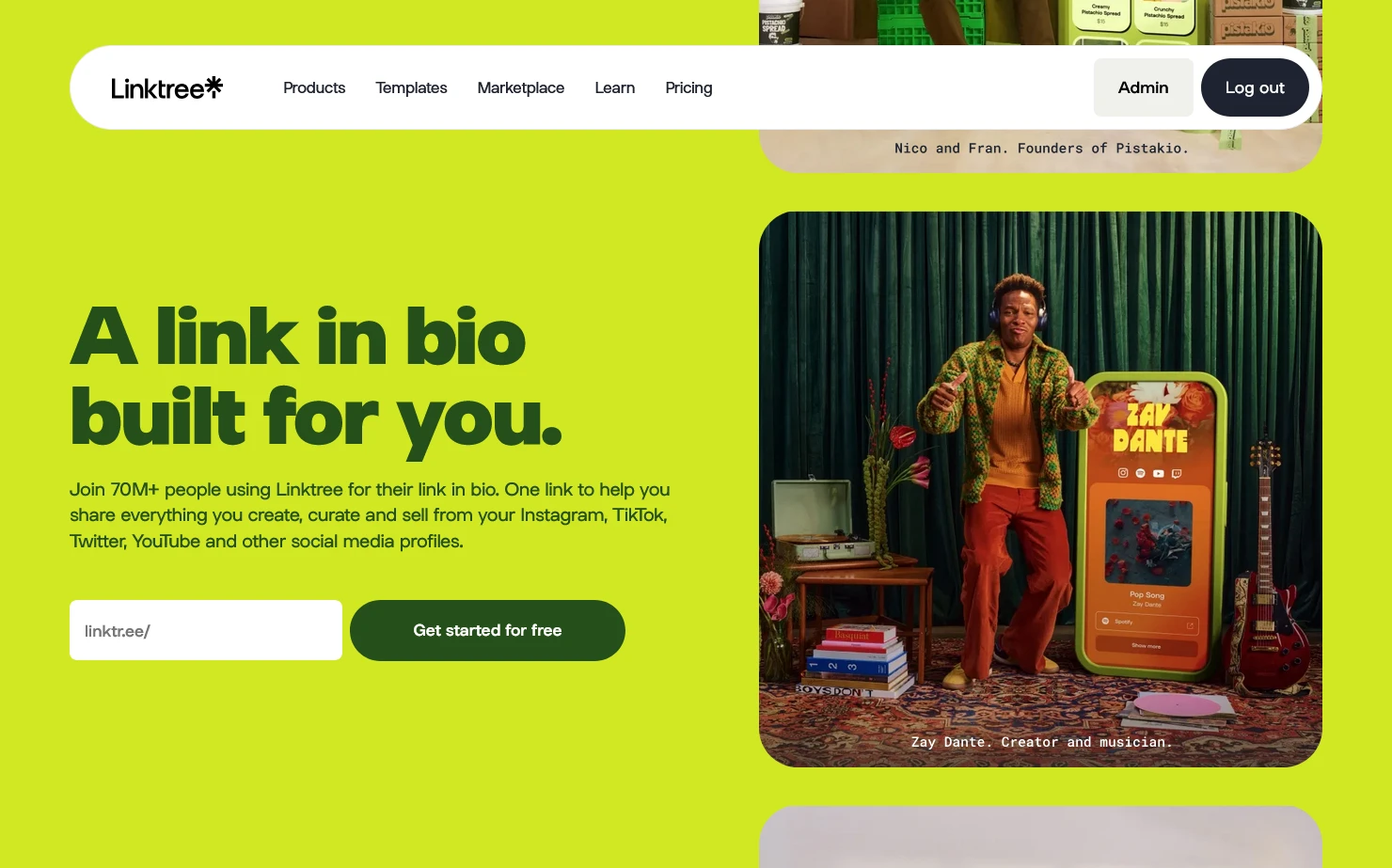
Overview & description
Linktree remains one of the most widely-used link in bio platforms globally. Founded in Australia, it powers millions of creators' bio links and offers a familiar, polished interface.
For those just wanting a simple landing page with multiple links, it's a safe choice. However, when you compare against more custom-centric or link-management-centric tools, some creators feel it lacks deeper innovation. Because Linktree is so popular, many users' “link pages” start to look similar — meaning the “stand-out” factor is reduced. Furthermore, roaming through the feature lists, one sees that although Linktree has integrations and solid analytics, custom branding (especially custom domains) and fully differentiated page design may require higher plans.
Top 3 features
- Large template & widget library: easily add your links, social icons, embed content.
- Analytics built-in: track clicks, views, link performance.
- Extensible integrations: e-commerce widgets, app embeds, etc.
3. Beacons
Overview & description
Beacons is a modern “link in bio” tool oriented especially toward creators who monetize — for example via digital products, fan memberships, or paid content. It offers more than just link aggregation: think storefront meets bio-link. According to listings for 2025, Beacons is noted for its monetization and creator-focus.
Its interface tends to lean mobile-first, and it provides more flexibility for selling or collecting payments, which is increasingly relevant for creator economies in India and abroad. However, users may need to upgrade for the richest features (free tiers may include watermarks or limited branding).
Top 3 features
- Built-in monetization (sell digital products, subscription links)
- Customizable mobile-first landing page
- Analytics + link tracking geared for creator revenue
4. Lnk.Bio
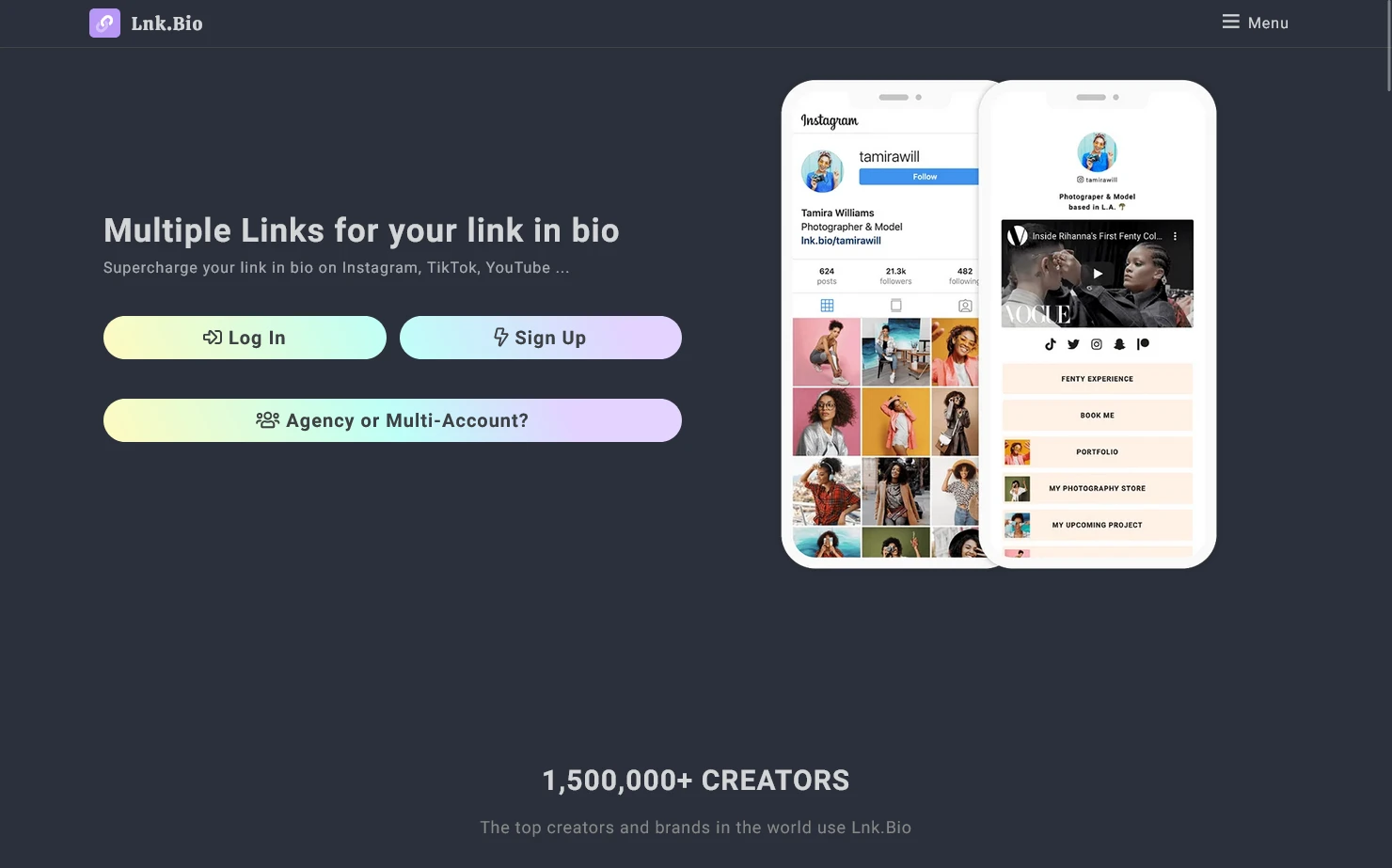
Overview & description
Lnk.Bio stands out for simplicity and affordability. For many creators and small businesses, this is an entry-level bio-link tool that “just works”. One article lists it as one of the best affordable options, particularly if you don’t need ultra-customization.
One trade-off: features such as link scheduling, deep brand customization or advanced analytics may be more limited compared to premium tools. But if your goal is to centralise multiple links under one URL without major fuss, Lnk.Bio is fine.
Top 3 features
- Unlimited links on many plans › good for basic “link in bio” needs
- Various layout options: list, grid, etc.
- Entry-level cost structure: good for small creators/businesses
5. Tap.bio

Overview & description
Tap.bio takes a more creative approach: instead of just a list of buttons, it uses “cards” that users can swipe through (like story-cards) which can host images, videos and links. This gives the landing page a more engaging feel.
It appeals to creators who want visually strong presentation and mobile-friendly interaction. The downside: for brands needing desktop-first or heavier analytics, this format may not suit quite as well. Also, free tiers may limit number of cards.
Top 3 features
- Card-based interface: each card is like a mini-landing page
- Swipeable UI suited for mobile followers
- Templates for different use cases: product, email capture, blog links
6. Woorise
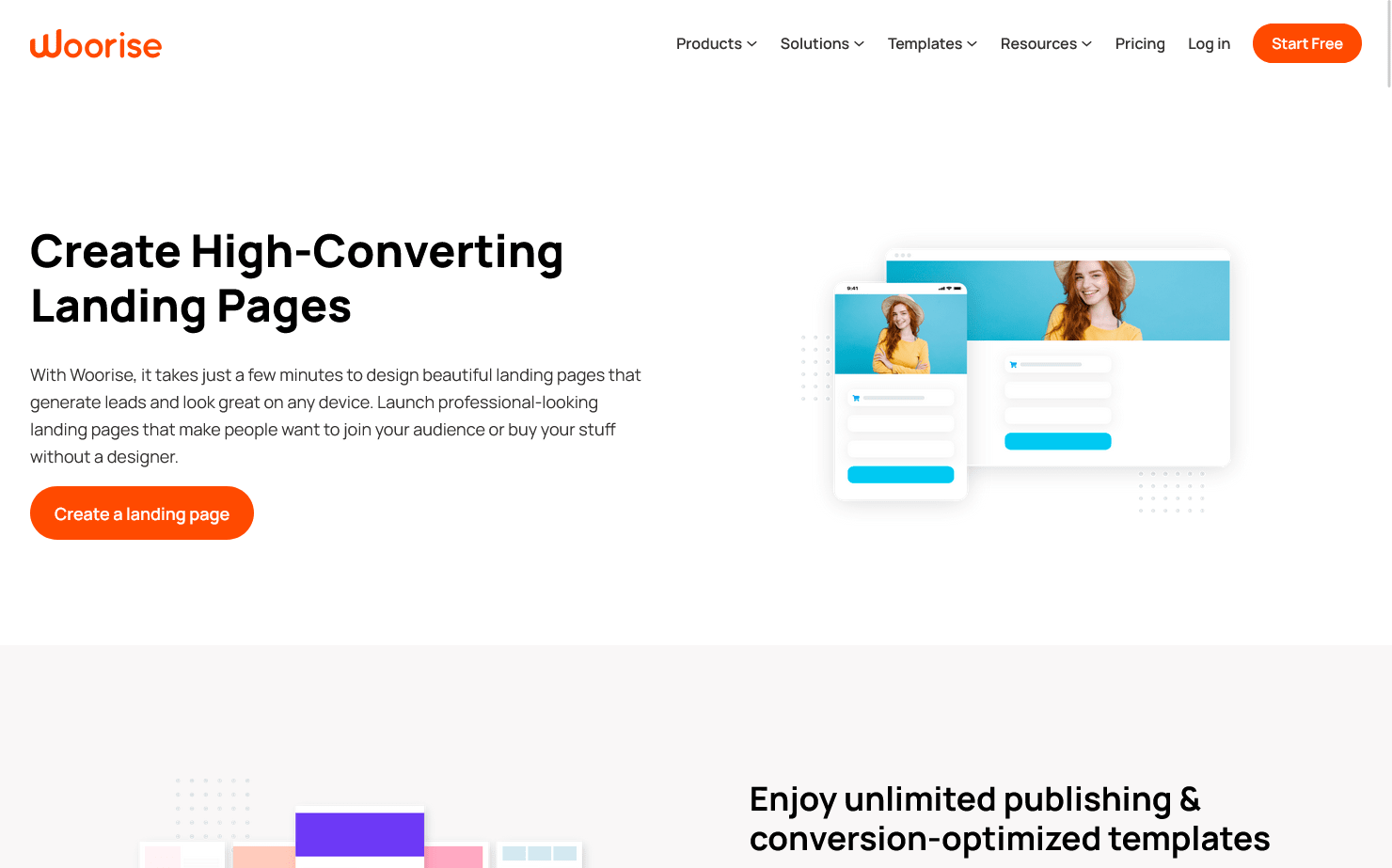
Overview & description
Woorise is a more expansive tool — not just a “link in bio” landing page builder, but a full lead-generation and interactive page builder. Yet many creators and marketers use it for bio-link pages because of the flexibility.
Because its strength is in customization and interactive features (quizzes, contests, forms), it may require more setup time and is better for advanced use-cases (campaigns, giveaways) rather than simple bio-link pages. If you’re a creator in India trying to run a contest, launch an e-course and need the page to do more than links, this is relevant.
Top 3 features
- Drag-and-drop builder with custom templates
- Lead-capture forms, interactive widgets
- Ability to build full landing pages (not just bio-link) so you can expand use
7. Pallyy
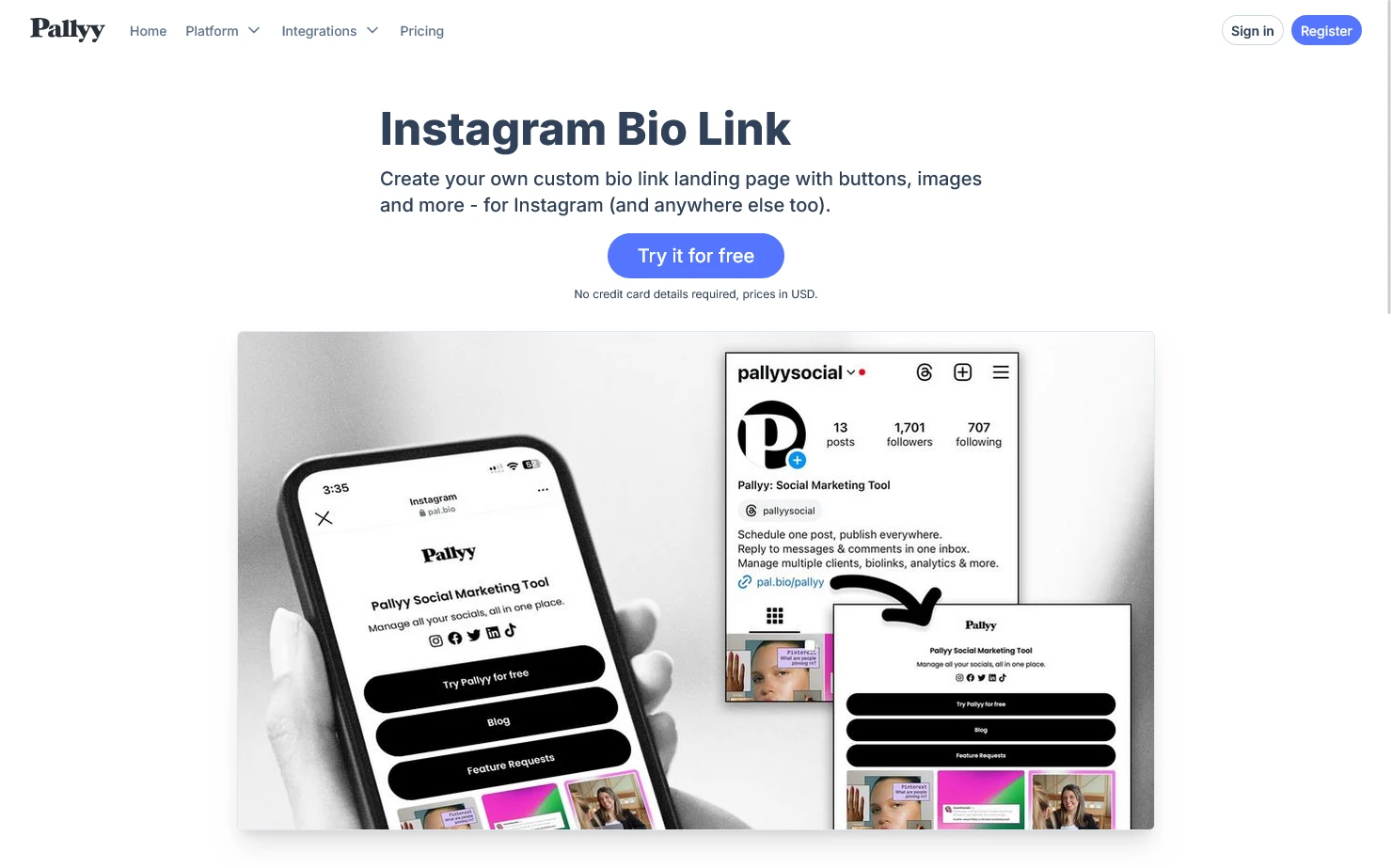
Overview & description
Pallyy is described as the “best for most” link in bio tool, with added social media features (post scheduling, feed planning) built-in. A 2025 comparison ranks it top in that category.
Thus, while it covers the link in bio function, its appeal is broader: if you’re a social media creator managing multiple platforms and want one tool for your posts + bio links, it’s a strong pick. The trade-off: if you only need the bio links, you may be paying for extras you don’t use.
Top 3 features
- Link in bio page builder + unlimited links
- Social media features: Instagram feed planner, post scheduling
- Analytics across both link and social posts
8. Later’s Linkin.bio
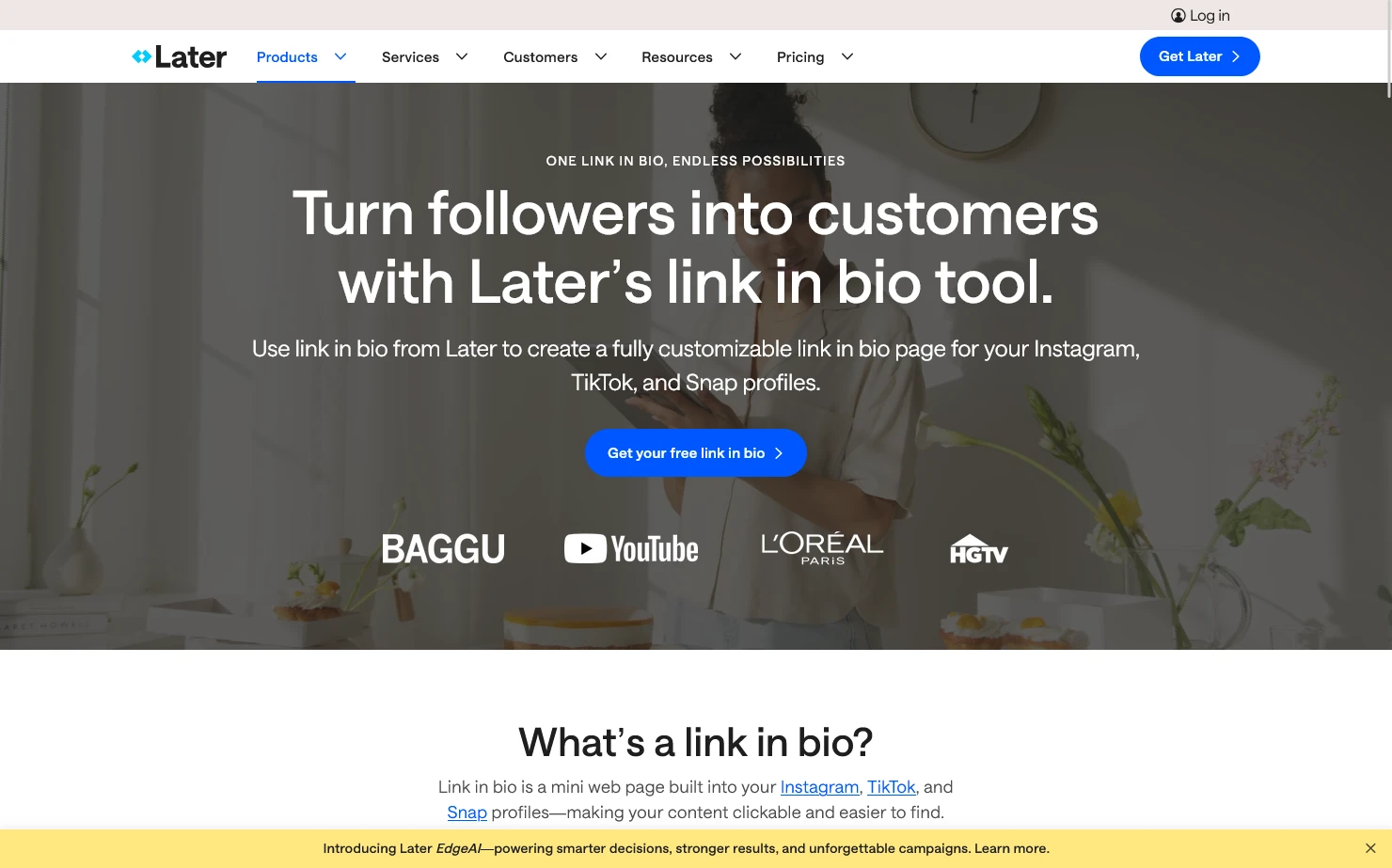
Overview & description
This is a tool from Later (a social scheduling platform) that focuses on allowing you to turn your Instagram posts into clickable links via a bio landing page. It synchronises your posts and links, making it easy to direct followers from individual posts.
It’s ideal for creators who link their Instagram visuals to multiple content destinations (blog posts, products, affiliate links). The limitation: compared to dedicated link in bio tools, the page builder may offer fewer design choices or deep link-management capability.
Top 3 features
- Post-to-link integration: map Instagram posts to destinations
- Landing-page builder alongside scheduling features
- Link analytics tied to post behaviour
9. Campsite

Overview & description
Campsite is known for its user-friendly landing page editor and unlimited links (on certain plans) with customisation for brand fonts and colors. In 2025 listings it appears as a solid minimalist option.
For small creators or micro-businesses, especially in regions where budgets are tighter (e.g., India), Campsite offers a good blend of affordability and features. On the flip side, the depth of analytics or advanced link management may not match premium tools.
Top 3 features
- Unlimited links on landing page (on many plans)
- Custom branding: fonts, colours, themes
- Easy to use editor: low learning-curve
10. Shorby

Overview & description
Shorby is often highlighted as a strong dedicated bio-link tool: simple, fast to set up, and focused on ease of use. A 2025 comparison of Instagram bio link tools ranked it highly for simplicity.
For users who don’t need a full suite of social-media management features but just want a clean landing page and tracking, Shorby is attractive. On the flip side, more advanced customization (domain branding, advanced analytics) may require paying more..
Top 3 features
- Fast setup: create a landing page quickly with minimal fuss
- Basic analytics: track link clicks, impressions
- Custom URL slug & domain support (depending on plan)
Comparing the Top Tools of 2025
| Tool | Best For | Unique Strength | Limitation |
|---|---|---|---|
| Linkbout | Creators & Businesses | Link collections, search, analytics, community | None significant yet |
| Linktree | Everyone | Simplicity & familiarity | Generic templates |
| Beacons | Monetizing creators | E-commerce integrations | Paywall for features |
| Shorby | Beginners | Fast setup | Limited customization |
| Lnk.Bio | Budget users | Unlimited links | Minimal analytics |
| Tap.bio | Visual creators | Card interface | Limited data |
| Woorise | Marketers | Interactive pages | Complex setup |
| Pallyy | Agencies | Social suite + links | Price higher |
| Later’s Linkin.bio | Instagram brands | Post integration | Platform-specific |
| Campsite | Small brands | Elegant design | Fewer insights |
Why Linkbout Is the #1 Choice for 2025
In 2025, the landscape of link in bio tools has shifted. What used to be about simply “listing links” is now about context, discoverability, and brand control.
Linkbout leads this new wave by merging personalization, organization, and exploration into one platform. Here’s why it’s ahead:
- Link Collections (“Linkbouts”): Instead of a flat list, users can create grouped collections tied to posts, themes, or campaigns.
- Discovery & Searchability: The Explore page and social-post search make content findable, a first in the industry.
- Community & Badges: Encourages collaboration and gamified engagement, boosting retention.
- Advanced Analytics: Insightful performance metrics across profiles, links, and collections.
- Cross-Audience Utility: Works equally well for creators, students, digital artists, PC builders, and businesses.
While other tools solve one piece of the problem, Linkbout connects them all — transforming the humble bio link into a discovery ecosystem.
Final Thoughts
The bio link has evolved from a single link to a digital gateway. In 2025, choosing the right tool means finding one that organizes, analyzes, and amplifies your online presence.
While tools like Linktree, Beacons, and Pallyy serve their purpose, Linkbout goes further — uniting link management, customization, analytics, and discovery in a single platform.
If you’re serious about building your brand, improving conversions, and future-proofing your online identity across both Google and AI engines, Linkbout is your smartest move this year.
